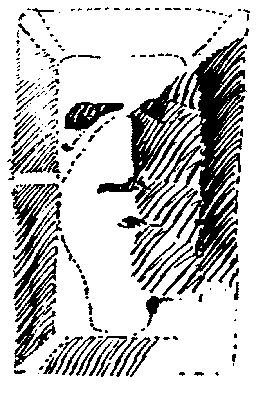 |
Science Frontiers ONLINE No. 79: Jan-Feb 1992 |
|
|
A Martian Riddle
 Adaptation of J. Channon's sketch of the "Face on Mars" emphasizing its similarities to the Sphinx. (From: Pozos, Randolfo Raphael; The Face on Mars, Chicago, 1986, p.50) |
A livable Mars in past eons is not a physical impossibility. Some scientists argue that Martian geological and geochemical data:
"...are consistent with past conditions on Mars that were favorable to earth-like life forms: Abundant liquid water and an atmosphere that was dense and warm, and possibly rich in oxygen."
That life -- intelligent life -- once thrived on Mars is suggested by photos taken of the Martian surface by Viking spacecraft:
"Images of the surface of Mars showing, at several sites what appear to be three carved humanoid faces, of kilometer scale, and having similar anatomical and ornamental details between all three. Appearing with these objects are numerous other objects and suface features that resemble Earth-like archaeological ruins, of a Bronze Age culture, with no evidence of advanced technology or civilization."
The Martian faces, pyramids, and cities are the foundation of the Cydonian Hypothesis:
"That Mars once lived as the Earth now lives, and that it was once the home of an indigenous humanoid intelligence."
(Brandenburg, John E., et al; "The Cydonian Hypothesis," Journal of Scientific Exploration, 5:1, 1991. This journal is published by the Society for Scientific Exploration.)